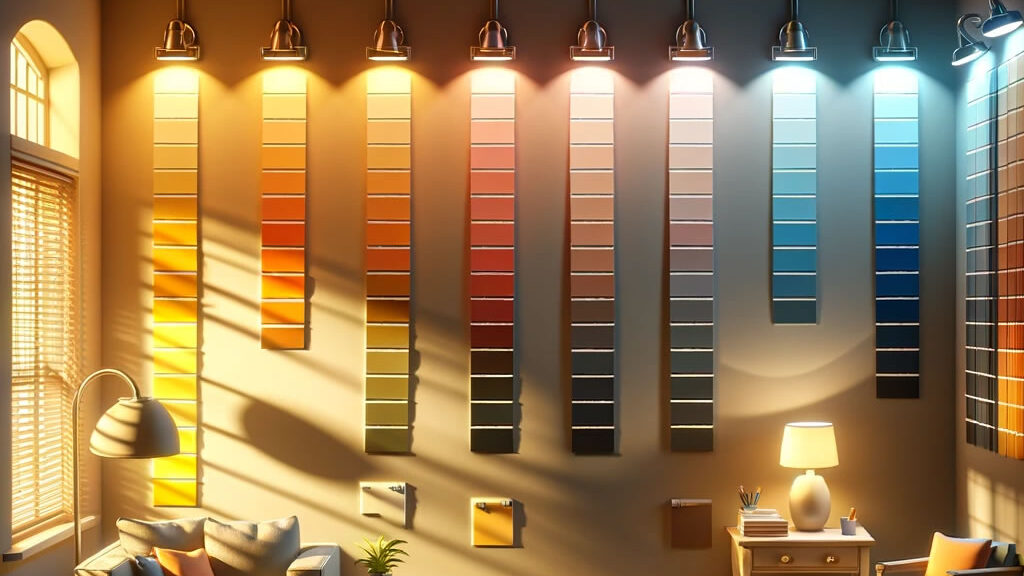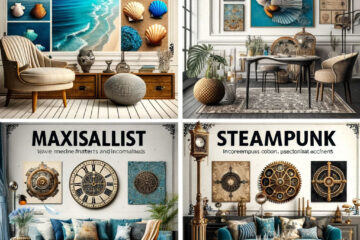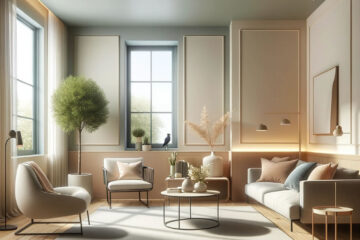This guide aims to help you navigate through the myriad of color choices to find the perfect Color Palette for Your Home.
Importance of Color Palette for Your Home
Color is a critical element in home design, as it sets the mood and atmosphere of a space.
The right color palette can transform a room, making it feel cozy, vibrant, or tranquil. It’s not just about aesthetics; colors can also affect our emotions and well-being.
Overview of the Article’s Purpose
Whether you’re looking to create a calming retreat or a lively entertainment space, these tips will assist you in making choices that reflect your personal style and enhance your home’s overall appeal.
The Role of Color Palette for Your Home in Personal Expression
Your home is a reflection of your personality, and the colors you choose play a significant part in this expression.
From bold, expressive hues to soft, subtle tones, the colors in your home can tell your story and create a backdrop for your life’s moments.
Table of Contents
Using Nature, Magazines, and Online Platforms for Ideas

Nature: Look to the outdoors for a natural color scheme. Observe how colors change with the seasons for inspiration.
Magazines: Home decor and design magazines often showcase the latest color trends and combinations.
Online Platforms: Websites like Pinterest and Instagram are treasure troves of color ideas and home decor inspiration.
Personal Preferences vs. Trends:
- Your Style: Choose colors that resonate with your personal style rather than blindly following trends.
- Longevity: Consider how the colors will age over time and whether they will still appeal to you in the years to come.
Creating a Mood Board: Compile a mood board with fabric swatches, paint chips, and images that inspire you.
This visual tool can help you see how different colors and textures work together.
Emotional Impacts of Different Colors

- Red: Energizing and stimulating, suitable for areas of activity.
- Blue: Calming and serene, ideal for bedrooms and bathrooms.
- Green: Refreshing and harmonious, perfect for creating a natural feel.
Balancing Personal Taste with Psychological Effects:
- Personal Preference: Choose colors that you are naturally drawn to.
- Room Function: Consider the purpose of each room and select colors that enhance the intended mood.
Using Color to Influence Mood:
- Warm Colors: Create a cozy and inviting atmosphere with shades of red, orange, and yellow.
- Cool Colors: Foster a calm and relaxing environment with hues of blue, green, and purple.
Considering Lighting and Room Size:

- Natural Light: Observe how colors change in natural light throughout the day.
- Room Size: Use lighter colors to make small rooms feel larger and darker shades for a more intimate setting.
The Role of Swatch Tests and Color Comparisons:
- Swatch Tests: Apply paint swatches to different walls to see how they look in various lighting conditions.
- Color Comparisons: Place different color samples side by side to see how they interact.
Experimenting with Color Palette for Your Home:
- Accent Colors: Use bold colors for accent walls or accessories for a pop of color.
- Neutral Palette: Start with a neutral palette and gradually introduce color through decor items like cushions and artwork.
Using Neutral Bases and Accent Walls
- Neutral Bases: Begin with neutral walls as a canvas and add color through furnishings and decor.
- Accent Walls: Choose a wall to paint in a bold color or pattern to create a focal point.
Strategies for Different Room Types and Open Floor Plans:
- Room by Room: Coordinate colors between rooms for a cohesive look.
- Open Floor Plans: Use a consistent color palette throughout the space for unity.
Balancing Color and Texture:
- Mix and Match: Combine different textures and materials to add depth to a monochromatic scheme.
- Contrast: Use contrasting colors and textures to create visual interest and balance.
Front Questions Section
Why is choosing the right color palette important for your home?
Choosing the right color palette is crucial because it sets the mood and atmosphere of your home.
Colors can influence emotions, affect how space is perceived (making rooms feel larger or cozier), and reflect your personal style.
A well-chosen palette ensures your home is a comfortable, pleasing environment that resonates with your personality.
How can you find inspiration for your home’s color scheme?
Inspiration for your home’s color scheme can be found in nature, design magazines, and online platforms like Pinterest and Instagram.
Look for colors in everyday life that resonate with you, such as in art, landscapes, or fashion.
Creating a mood board with collected images, fabric swatches, and paint samples can also help visualize potential color schemes.
What role does color psychology play in interior design?
Color psychology plays a significant role in interior design by influencing the mood and ambiance of a space.
Different colors can evoke various emotions; for example, blues are calming and serene, making them ideal for bedrooms, while reds are energizing, suitable for spaces that encourage activity.
Understanding color psychology helps in choosing colors that align with the function and desired feel of each room.
What are some practical tips for testing and choosing paint colors?
Practical tips for choosing paint colors include:
Conducting swatch tests by applying paint samples to different walls to observe how they appear under various lighting conditions.
Comparing different hues side by side to see how they interact.
Considering the room’s size and natural lighting, as these factors can significantly impact how a color looks.
Starting with a neutral base and experimenting with accent colors for flexibility.
How can you create a cohesive color scheme in an open floor plan?
To create a cohesive color scheme in an open floor plan:
Use a consistent color palette throughout the space to unify different areas.
Consider using different shades or tints of the same color to define separate areas while maintaining a harmonious look.
Employ architectural elements like molding or distinct lighting to subtly separate spaces without disrupting the overall flow.
Accentuate with rugs, furniture, and decor to add layers of color and texture, enhancing the sense of distinct yet connected spaces.




[…] color palette for 2024 is all about warmth and comfort. Peach and apricot hues are taking center stage, offering […]
[…] out how the right color palette and lighting can transform the feel of your small […]
[…] by choosing a theme or color palette that excites your child. From deep sea adventures to enchanted forests, the possibilities are […]
[…] the colors of your home and surrounding landscape when selecting flowers for your […]
[…] DIY home repairs are perfect for beginners and can be accomplished with basic tools and a little bit of patience and […]